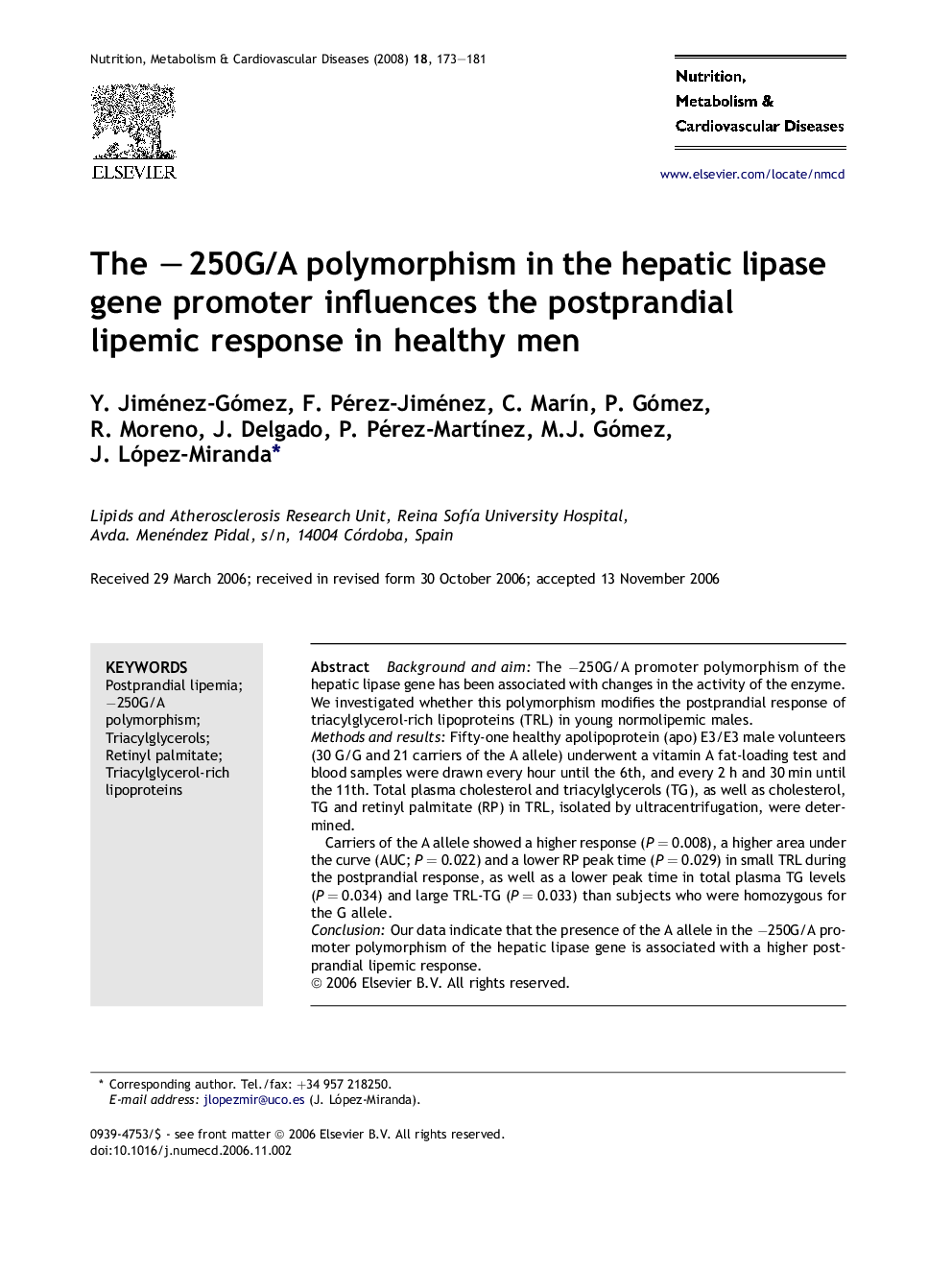| Article ID | Journal | Published Year | Pages | File Type |
|---|---|---|---|---|
| 3002516 | Nutrition, Metabolism and Cardiovascular Diseases | 2008 | 9 Pages |
Background and aimThe −250G/A promoter polymorphism of the hepatic lipase gene has been associated with changes in the activity of the enzyme. We investigated whether this polymorphism modifies the postprandial response of triacylglycerol-rich lipoproteins (TRL) in young normolipemic males.Methods and resultsFifty-one healthy apolipoprotein (apo) E3/E3 male volunteers (30 G/G and 21 carriers of the A allele) underwent a vitamin A fat-loading test and blood samples were drawn every hour until the 6th, and every 2 h and 30 min until the 11th. Total plasma cholesterol and triacylglycerols (TG), as well as cholesterol, TG and retinyl palmitate (RP) in TRL, isolated by ultracentrifugation, were determined.Carriers of the A allele showed a higher response (P = 0.008), a higher area under the curve (AUC; P = 0.022) and a lower RP peak time (P = 0.029) in small TRL during the postprandial response, as well as a lower peak time in total plasma TG levels (P = 0.034) and large TRL-TG (P = 0.033) than subjects who were homozygous for the G allele.ConclusionOur data indicate that the presence of the A allele in the −250G/A promoter polymorphism of the hepatic lipase gene is associated with a higher postprandial lipemic response.
